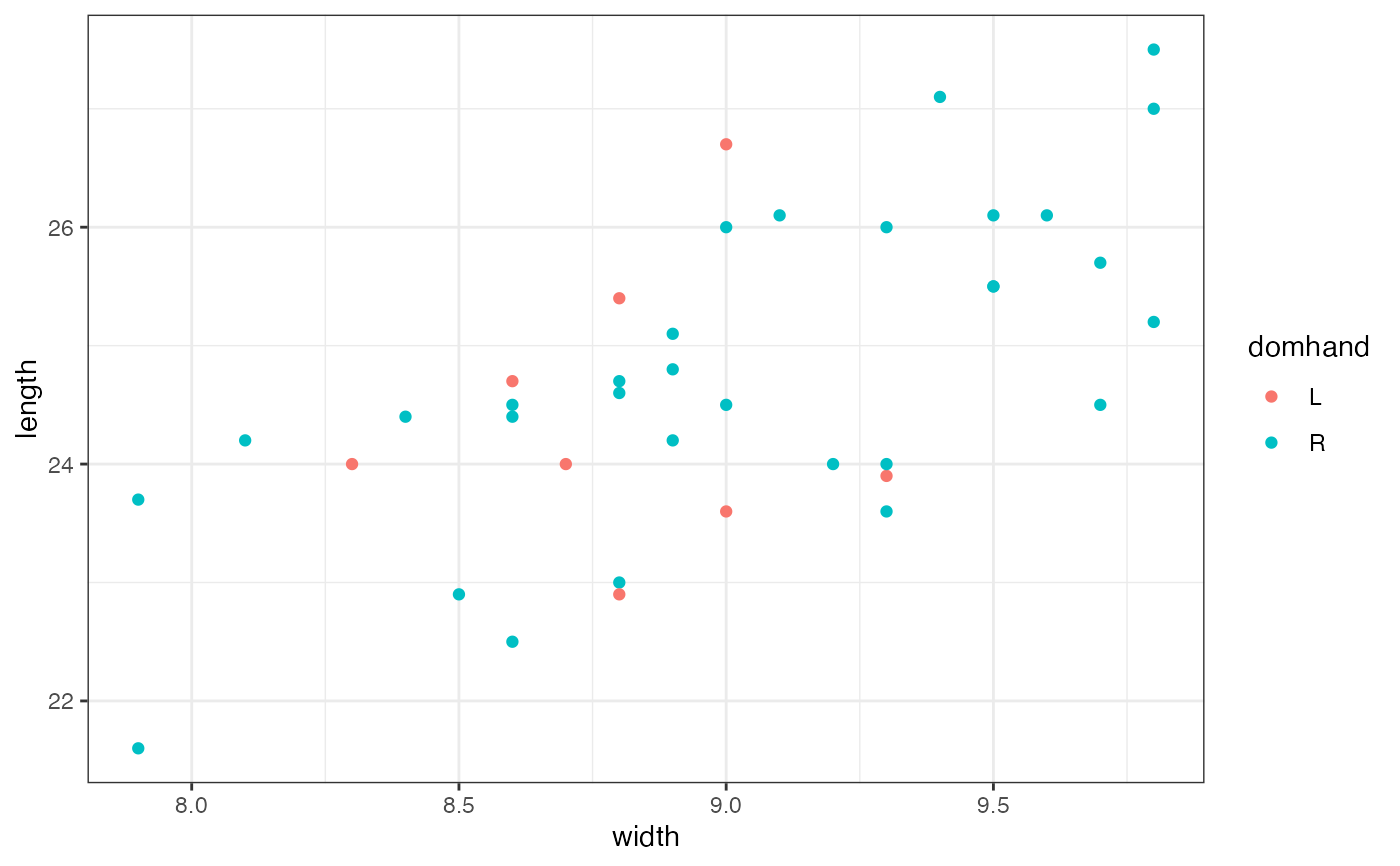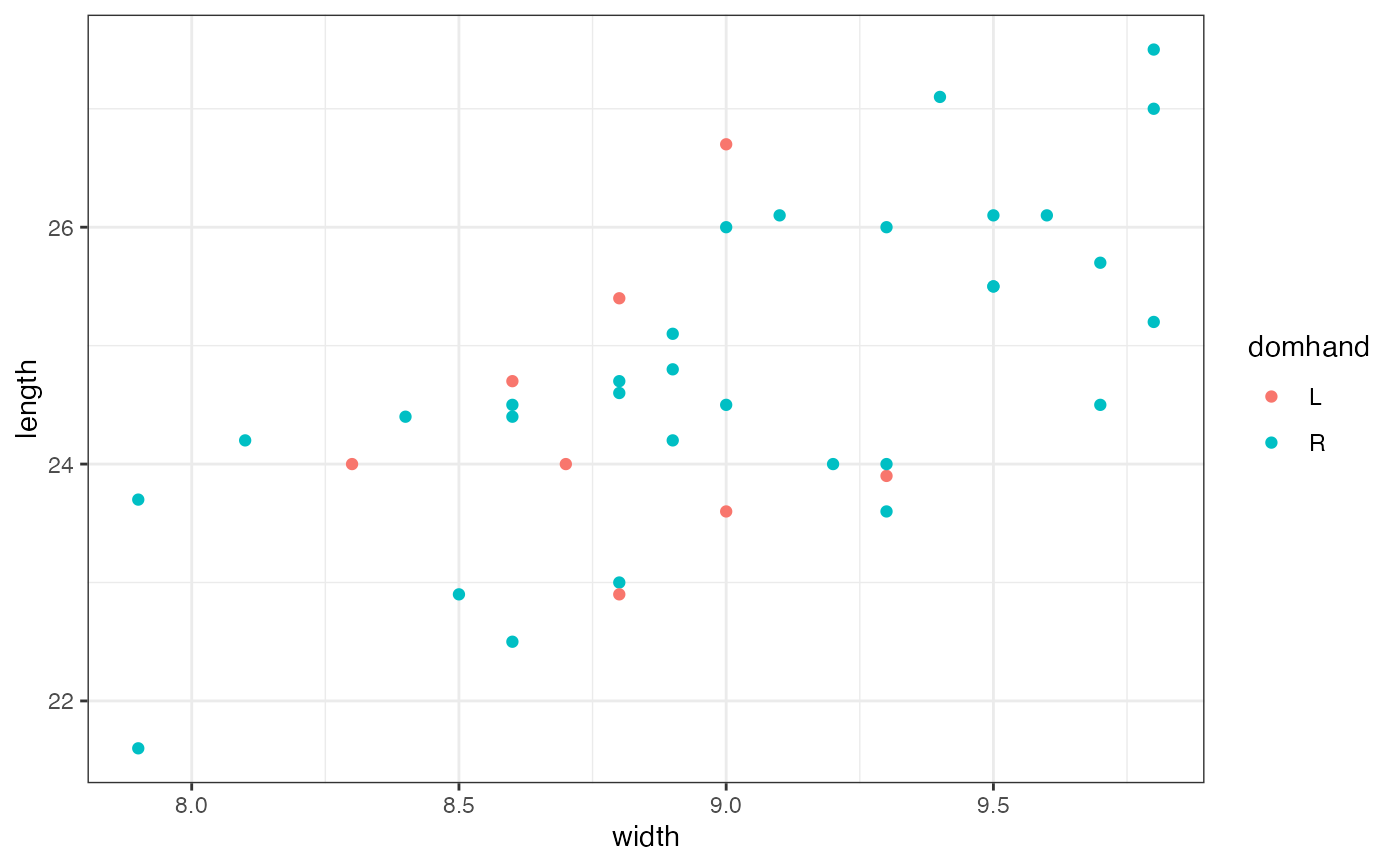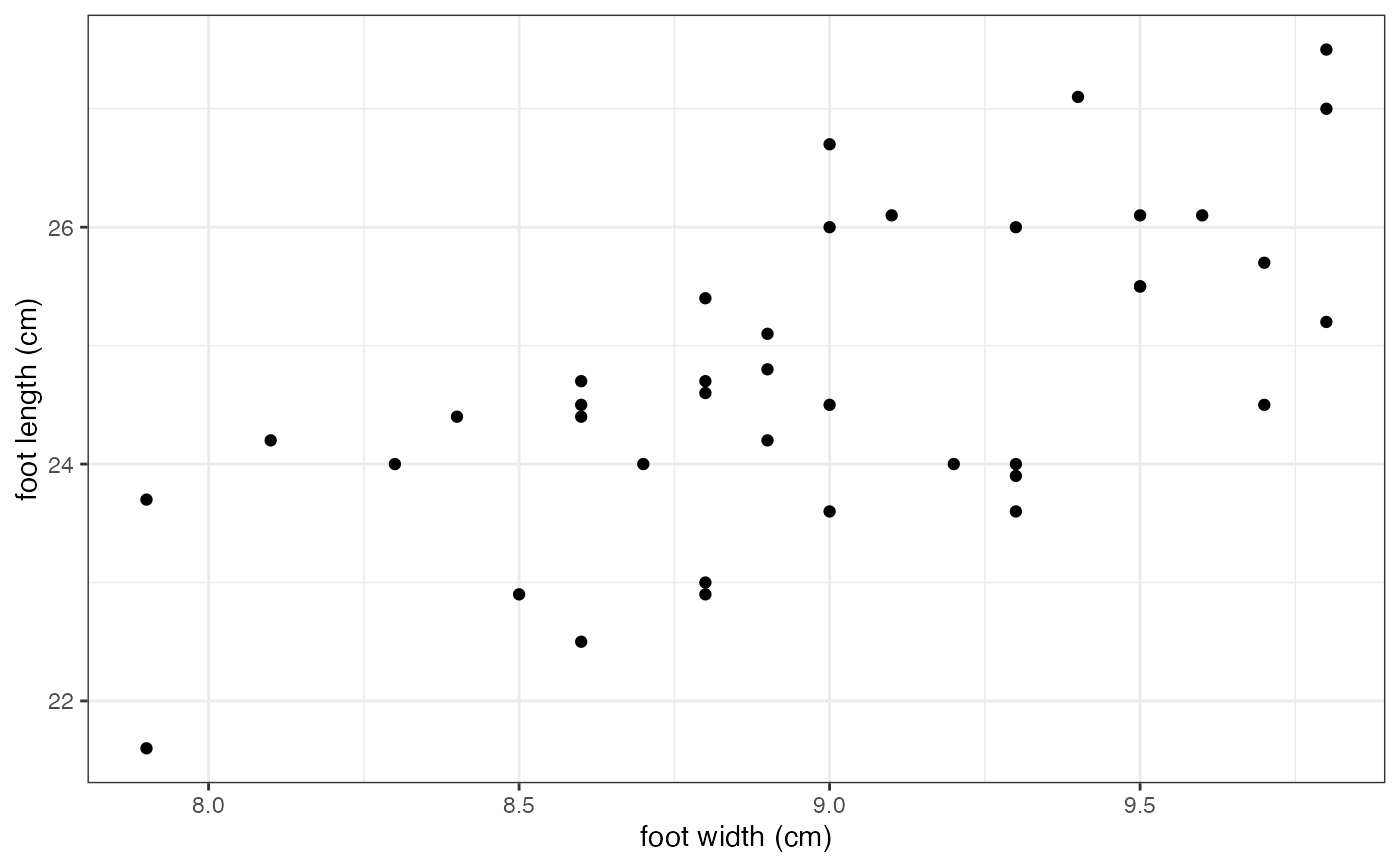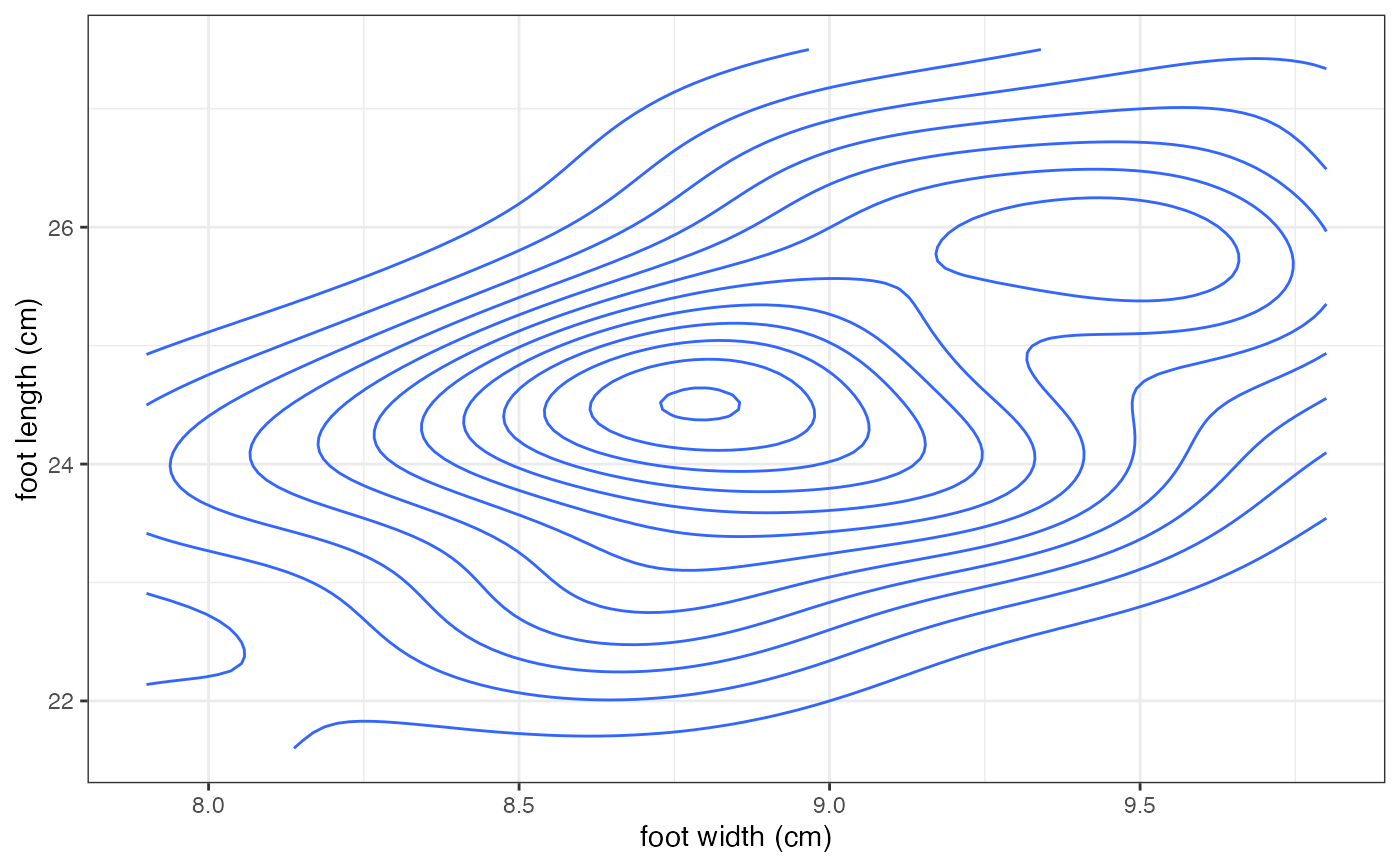Some packages like expss provide mechanisms for providing longer labels to R objects.
These labels can be used when labeling plots and tables, for example, without requiring
long or awkward variable names. This is an experimental feature and currently only supports
expss or any other system that stores a label in the label attribute of a vector.
Usage
gf_relabel(plot, labels = get_variable_labels(plot$data), ...)
# S3 method for class 'gf_ggplot'
print(x, labels = get_variable_labels(x$data), ...)Examples
# labeling using a list
labels <- list(width = "width of foot (cm)", length = "length of foot (cm)",
domhand = "dominant hand")
gf_point(length ~ width, color = ~domhand, data = mosaicData::KidsFeet) |>
gf_relabel(labels)
 # labeling using ...
gf_point(length ~ width, color = ~domhand, data = mosaicData::KidsFeet) |>
gf_relabel(
width = "width of foot (cm)",
length = "length of foot (cm)",
domhand = "dominant hand")
# labeling using ...
gf_point(length ~ width, color = ~domhand, data = mosaicData::KidsFeet) |>
gf_relabel(
width = "width of foot (cm)",
length = "length of foot (cm)",
domhand = "dominant hand")
 # Alternatively, we can store labels with data.
KF <- mosaicData::KidsFeet |>
set_variable_labels(
length = 'foot length (cm)',
width = 'foot width (cm)'
)
gf_point(length ~ width, data = KF)
# Alternatively, we can store labels with data.
KF <- mosaicData::KidsFeet |>
set_variable_labels(
length = 'foot length (cm)',
width = 'foot width (cm)'
)
gf_point(length ~ width, data = KF)
 gf_density2d(length ~ width, data = KF)
gf_density2d(length ~ width, data = KF)
 get_variable_labels(KF)
#> $name
#> NULL
#>
#> $birthmonth
#> NULL
#>
#> $birthyear
#> NULL
#>
#> $length
#> [1] "foot length (cm)"
#>
#> $width
#> [1] "foot width (cm)"
#>
#> $sex
#> NULL
#>
#> $biggerfoot
#> NULL
#>
#> $domhand
#> NULL
#>
get_variable_labels(KF)
#> $name
#> NULL
#>
#> $birthmonth
#> NULL
#>
#> $birthyear
#> NULL
#>
#> $length
#> [1] "foot length (cm)"
#>
#> $width
#> [1] "foot width (cm)"
#>
#> $sex
#> NULL
#>
#> $biggerfoot
#> NULL
#>
#> $domhand
#> NULL
#>
